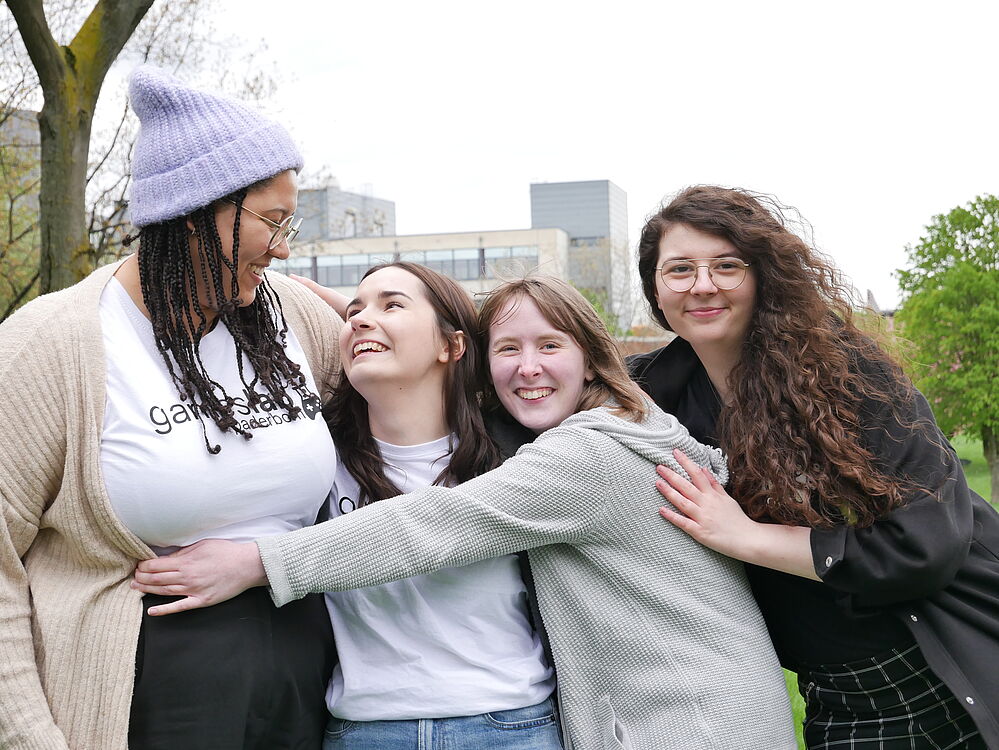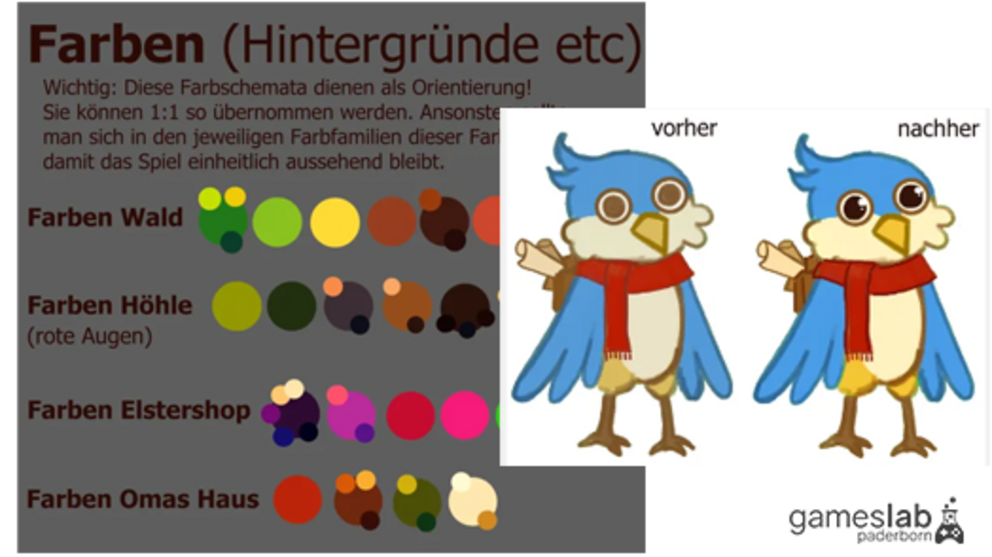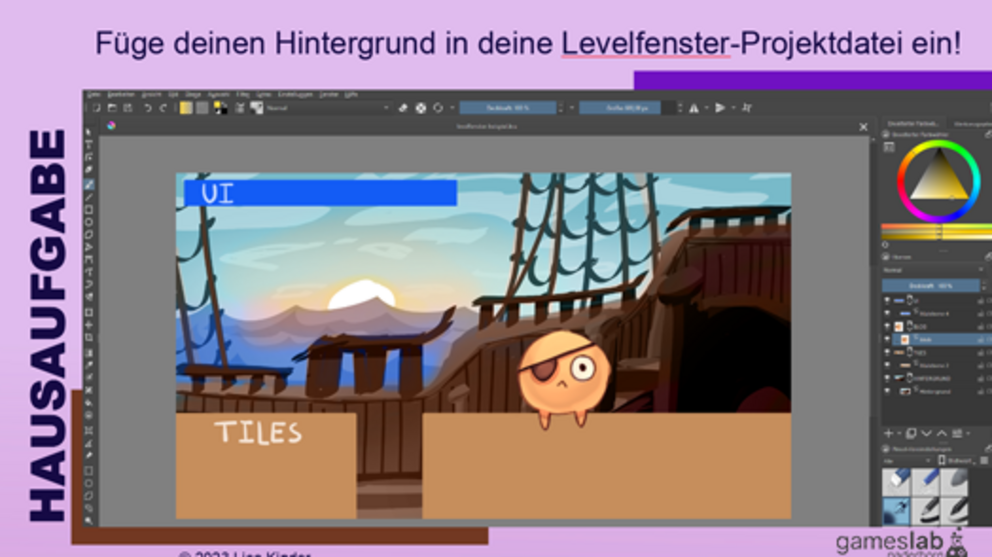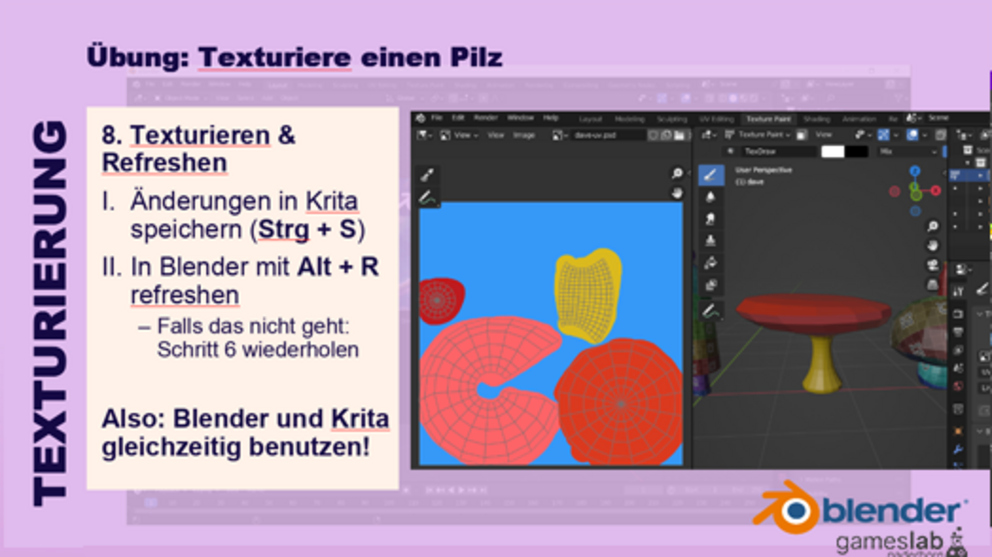2D Art

The 2D Art area creates digital art and visual concepts for games. Everything from concept art to character animations, background images, and user interfaces is included. The workshop welcomes all skill levels, but has a relatively high workload. Not only are the basics of drawing taught here, but above all how to produce and implement assets for games. We currently work mainly with the free drawing software Krita.
Skills in the 2D department
Our role and responsibilites
In the first semester, the role of 2D artists is experienced in its entirety for the first time in the GameJam. This is where all the workshop content and exercises for effective realisation come together in a small time frame. Depending on their strengths and abilities, 2D artists divide up research and conceptualisation tasks and produce their assets in consultation with their team and the other departments.
If they participate again in the summer semester, previously learnt skills are applied in the semester project. This is where the responsibilities of a 2D Art Lead are added, which involves the long-term coordination of their own team or good co-operation as a team member.
Vocabulary of the 2D Department
A turnaround depicts an object from at least three sides (front, side and back). It is particularly important that all elements of the object are at the same height, which is often achieved by using auxiliary lines. The turnarounds are then used by 3D artists to convert the drawing into a 3D object.
Keyframe animation is a specific workflow for creating animations. Instead of drawing lots of individual images (“frames”) that are put together to give an object movement, a character is drawn just once, for example. A skeleton is created for this character in the respective program and assigned “muscles” (“rigging”) that influence the drawn image. Similar to marionettes, the body parts can now be moved, enabling faster animation.
The animation is based on keyframes. This means that individual positions are defined at certain points in time (“keys”), whereupon the program automatically calculates the movement between these positions.
An animation is made up of several frames (individual images) to give an object movement. With the help of keyframes and an object with a skeleton, which can then be controlled like a kind of puppet, the animation is partially automated. This means that positions of the object are set at certain points in time (= “keys”). The respective program then moves the object automatically from key to key and calculates the path that the object takes between the keys.
Otherwise, animations are often created in such a way that each frame is drawn individually.
For example, to animate a character using keyframe animation, it must be drawn completely once (“character sheet”). The end goal is that the character can be controlled like a puppet. For this reason, one or more bones are given to the character in the respective program for each body part that is to be moved. An arm, for example, can consist of a single image, but can be given two bones so that it can “bend”. The bones then come together to form a large, coherent skeleton.
At this stage, the skeleton is not yet actively connected to the drawn images. This means that the character does not yet move when the skeleton is moved. For this reason, the skeleton is given a kind of muscle environment during the “rigging” process, which assigns areas of the drawing to the skeleton that belong to the respective bone.
Quick Navigation



